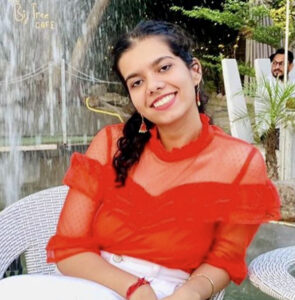
- Home»
- jmi»
- BE Part Time»
JMI BE Part Time

Kritika Yadav

JMI BE Part Time: Jamia Millia Islamia – Faculty of Engineering and Technology offers B.E. evening program for working professionals who have acquired a Diploma in Engineering. The classes are held between 6.00 PM to 9.00 PM on all working days. The practical classes are held on Sundays during daytime.
B. E.(Evening) Degree Courses offered by Jamia Millia Islamia at Faculty of Engineering & Technology are :-
- Civil Engineering
- Mechanical Engineering
- Electrical Engineering
- Electronics & Communication Engineering
- Computer Engineering No. of seats in different B. E. (Evening) degree programs offered by Jamia Millia Islamia at Faculty of Engineering & Technology
Eligibility Criteria For JMI BE Part Time
A pass in three year engineering diploma course from a Polytechnic or Technical Institute with at least 2 years of work experience. OR
For admission into B.E. Computer Engineering branch.-Three years diploma course in Electronics & Communication or Computer Engineering with 2 years of work experience. OR
Diploma holders from Jamia Millia Islamia who has secured minimum 70% marks can apply without professional experience.
- Civil Engineering – 60 Seats
- Mechanical Engineering – 60 Seats
- Electrical Engineering – 60 Seats
- Electronics & Communication Engineering – 60 Seats
- Computer Engineering – 60 Seats
JMI BE Part Time Selection Procedure
The admission to B.E. Evening course is made on the basis of Entrance Test, Professional Experience and Interview. The duration of test is 3 hours with a weightage of 130 marks. A 40 marks weightage is given for Professional Experience and 30 marks for Interview.
Syllabus For JMI BE Part Time
Civil Engineering
Engg. Mechanics: Law of forces-triangle, parallelogram and Polygon law, Moments, couple, centre of gravity, centroid, moment of inertia, motion, velocity and Acceleration, Equations of motion. Momentum, Newton’s law’s of motion. Conservation of momentum. Work, power and energy. Horse- power, types of energies, conservation of energy. Curvilinear motion, Angular velocity Centripetal and Centrifugal force. Simple machines-Iever, axle, wheel, pulley. Stresses and strains, hooke’s Law, Elastic constants and their relationship, shear force and behind moment diagrams for cantilever, simply supported and overhanging beams subject to concentrated, uniformly distributed and varying loads, bending of beams, section modulus. Deflection of simply supported beams and cantilevers. (U.D.L. and point loads only) analysis of trusses, Methods of Section and Joints. (simple trusses only). Simple columns and struts, slenderness ratio.
Structures: Concrete technology : Introduction to properties, Aggregates, cement, Water-cement ratio law, workability preliminary tests, Curing admixtures. RCC properties of different types of steel. Theory of simple bending of RCC. beams. Balanced, under-reinforced and over-reinforced beams. Shear strength of RCC beams section. Bond and anchorage. Design of one-way slabs. General principle of design of reinforced brick/lintels and slabs. Structural steel connections-rivets and welds types, testing and design, Beams-I.S. specifications deflected shapes and structural behavior. Design of compression members angle struts and axially loaded columns.
Surveying: Chain surveying: Direct ranging, chaining on flat and slopping ground, calculation of areas, trapezoidal and Simpson ‘s rules; Compass: Systems of bearings, declination and local attraction, open and closed traverses; Leveling: Principles of leveling, Dumpy, Titling and quickset level. Level Book, Numerical problems including problems of missing entries; Plane table surveying: Two points and three points problems, Area; Contouring: Contour interval and horizontal equivalent, characteristics and methods. Direct and indirect interpolation; Theodolite surveying: Horizontal and vertical angles, Bearing of a line, traversing errors in theodolite survey, tachometry, Stadia constant, Determination of horizontal and vertical distance, simple circular curves, degree of the curve, tangent length, deflection angle, Apex distance and midordinate, setting out of a simple circular curve.
Hydraulics: Physical Properties of Liquids: Surface tension, capillary and viscosity, Pascal’s Law, total pressurecentre of pressure, vertical and inclined plane surface Measurement of Pressure: Atmospheric pressure, Gauge and absolute pressure, manometer; Orifices: Types of orifices, hydraulic coefficients, vertical rectangular, free drowned and partially drowned orifice, emptying of tanks; Flow through pipes: Laminar and turbulent flow, Reynolds number’s, critical velocity distribution, losses in pipe lines, change of direction, Hydraulic gradient line and total energy line, uniform, and composite section Syhon; Water hammer, flow through open channels. Discharge through channels, Chezy, Manning-Kutter and Bazin’s formulae. Rectangular, Trapezoidal and circular sections; Flow measurement: Velocity, discharge, notch and orifice, types of notches, discharge formulae, weir, ventilation of weirs, spilways and siphon spillway;
Pumps and turbines: Centrifugal and reciprocating pumps, section of pumps for different purposes, hydraulic ram, turbine reaction and impulse turbine. Pelton wheel, Francis and Kaplan turbines.
Mechanical Engineering
Engg. Mechanics: Co-planer and non-co-planer force system, triangle, parallelogram and polygon law of forces. Moments, couple, centre of gravity. Centroid, moment of inertia. Motion and displacement. Velocity and acceleration, equations of motion. Newton’s Laws of Motion. Momentum. Conservation of momentum. Work, power and energy. Types of energy. Conservation of energy. Curvilinear motion. Angular velocity and acceleration. Centripetal and centrifugal force. Simple machines (lever, wheel, axle, pulley, jack and wrinch crab). Mechanical advantage, velocity ratio and efficiency of a machine. Laws of friction. Properties of fluids (specific weight, specific mass, specific volume, capillary). Pascal’s Law. Pressure of vertically inclined surface. Centre of pressure. Types of fluid flow. Rate of discharge and equation of continuity Bernoulli’s theorem. Fluid flow through a pipe, an orifice and a venturimeter. Pitot tube. Loss of pressure head due to friction sudden area enlargement, contractions, obstruction and bends.
Design: Types of stress and strain. Strain energy due to direct stresses. Stress due to gradual, sudden and falling load. Theory of simple bending Stress in beams of rectangular/circular/I/T sections under different types of loads (Concentrated/UDL). Deflection in simply supported beams and cantilevers under UDL Concentrated loads. Types of columns and their modes of failure. Buckling. Crushing loads. Factors affecting strength of a column. Riveted and welded joints for pressure vessels and structural members. Bolts and nuts. Power transmitted by shafts under torsion. Design of flanged coupling. Design of leaf and close-coiled helical springs. Cotter and Knucle joints.
Production Engineering
Types of welding/Metal Forming/Moulding processes and their applications. (Introduction only). Introduction to a machine tools and metal cutting. Common fracture of machine tools. Geometry of single point cutting tools, drills and milling cutters. Types of chips. Tool wear and tool life. Use of Cutting fluids and their types. Working principle and mechanism of ashaper. Specification of a shaper. Types of shaper tools types, angle and materials. Industrial Management. Source of capital, Joint, stock, private, partnership and private limited company. Line staff and functional organizations. Trade unions. Labour laws. Industries disputes. Inventories and wages.
Thermal Engineering
Thermodynamic systems and their properties. Laws of thermodynamics. Enthalpy. Thermodynamic processes (constant volume, constant pressure, isothermal, adiabatic and polytropic). Conditions (wet saturated, dry saturated and super-heated) and properties of steam. Details of boilers for low and high pressure generation of steam, fire tube and water tube types. Principle, construction and working of impulse and reaction turbines. Classification of I.C. Engines S. I. and C.I. engines. Working principle of 2-stroke and 4-stroke cycle engines. Power cycles (ideal, air, fuel-air, otto, diesel dual combustion) their thermal efficiencies and comparisons. Principle of refrigeration. Refrigeration cycle, common refrigerants and their properties. Psychometric process and properties.
Electrical Engineering
D.C. and A.C. Network: Nodal and mesh analysis, superposition, thevenin’s, Norton’s and Maximum power stransfer theorems, series and parallel, A.C. circuits, series and parallel resonances, polyphase circuit, coupled circuit and filters.
Electrical Machines: D.C. Generators and Motors, concepts of critical resistance, back emf, torquesepped characteristics, methods of speed control, armature reaction and commutation. Transformers, efficiency, regulation, equivalent circuit and parallel operation, Induction motors, speed control, equivalent circuit. Alternators, voltage regulation parallel operation, Capynchronous motors, V -curves. Applications of electrical machines.
Power System: Distribution and transmission. Short, medium and long transmission lines, Insulators, corona effect, Protective Relays, circuit breakers and cables.
Electromagnetics: Coulomb’s law, electric field intensity; fields of line. sheet and volume charges, electric flux density. Gauss’s Law, energy and potential, dielectrics and capacitance, biot-Savart law, Ampere circuital law, Magnetic flux, Flux density. Steady magnetic field laws, Time varying fields and Marwell ‘s Equations.
Electrical Measuring Instruments: Indicating instruments. CRO, A.C. bridges, transducers, extension of range of measuring instruments, magnetic measurements.
Control Theory: Open loop and close loop system, Transfer function, time and frequency responses of second order system, Pole zero configuration, stability analysis, Root locus, Routh- Hurwitz criteria, Nyquist stability criterion.
Electronics: Semiconductor diodes, diode applications, Zeners and other two-terminal devices, BJT, biasing, FET biasing, small signal analysis. Multistage systems and frequency response, linear IC’s, operational amplifiers, feedback amplifiers and oscillators, logic gates, Triac, Diac, SCR.
Electronics and Communication Engineering
Basic Electricity: Ohm ‘s Law and resistivity. Parallel and series combinations of resistances and capacitors. Concept of constant current source and voltage source. Kirchoff’s laws. Difference between AC and DC. Average value, RMS value and form factor for a sine wave. Series and paralle, resonances. Quality factor, bandwidth and selectivity.
Electronic devices and Circuits: Semi-conductor physics. PN junction diode, Zener diode and other two terminal devices. BJT’s FETs and their biasing. Transistor amplifiers and their small signal analysis. Audio power amplifier, turned amplifier, multistage amplifiers. Feedback in amplifiers.
Waveshaping circuits: Clipping and clamping circuits. Integrating and differentiating circuits. Sweep signal and its generation. Sinusoidal oscillator circuits and multivibrator circuits.
Power Electronics: Operational amplifier and its applications. Characteristics and applications of SCR, UJT, TRIAC. Rectifiers and filter circuits.
Communication Engineering:Amplitude modulation, frequency modulation; Demodulation of AM & AM signals. FDM and TDM. Electromagnetic wave spectrum. Types of wave propagation, AM and FM transmitters. Radio receivers. Principles of microwave and satellite communications. T.V Camera, T.V transmitters, T.V Receivers (colour and monochrome), T.V Standards, filters and transmission lines.
Digital Techniques and Microprocessors: Binary, octal and hexadecimal number systems. Logic gates, adder and subtractor, multiplexer and demultiplexer, encoder and decoder. Flip flops, counters, shift registers, RAM, ROM. ADC and DAC. Organization of 8085 microprocessor. Instructions and addressing modes of 8085. Interrupts in 8085. Interfacing devices. Assembly language.Classifications of digital computers, I/O devices of computers.
Computer Engineering
The Binary System: Binary to decimal conversion & decimal to binary conversion.Logic Gates,Data Structure & user defined data structures,Linked list,Stacks & Queues using link list,Data abstraction, instances, and scheme,Entity and entity sets, relationships and relationship sets,E-R diagram, Database System,Object Oriented Development,Introduction to Objects, Classes,Processor Organisation,ALU, CPU register, Control Unit, Instruction types, formats, instruction sets and addressing modes, Parallel processing, classification (SISD, SIMD, MISD, MIND) Memory Organization: Types of Memory, Memory, Serial Access, random access, Main Memory, Memory Hierarchy, Memory References, Address mapping, Buolean expression, Design of Full Adder, Full Subtractor using MUX, Design of Code Converter using Decoder, Design of combinational circuits using MUX & decoder,Design of different gate using logic family; Memory Devices: Static and Dynamic memory, Sequential access memory, basic memory structure, ROM-architecture, RAM & ROM-IC’S, Combinational logic design using ROM. programmable logic devices (PLDs): PLA, PAL, PLC, FPGA and their application, Sequential Circuits using D- Type & JK flip-flop:
Digital Communication: Block diagram of digital communication system, information, information capacity; concept of band width, noice & channel capacity; sampling & quantization; Brief description of PAM, PPM, PWM, PCM, and Delta modulation, PSK & DSK.Handshake mode of communication RS-232C\IEEE 488, Main Feature of 8085:
Introduction to Computer Network: reference models, (OSI and TCP\IP) X.25 Network Layer, Transport Layer, Session Layer, Presentation Layer; Types of Operating Systems, Batch processing, Multiprogramming, Multi processing.




